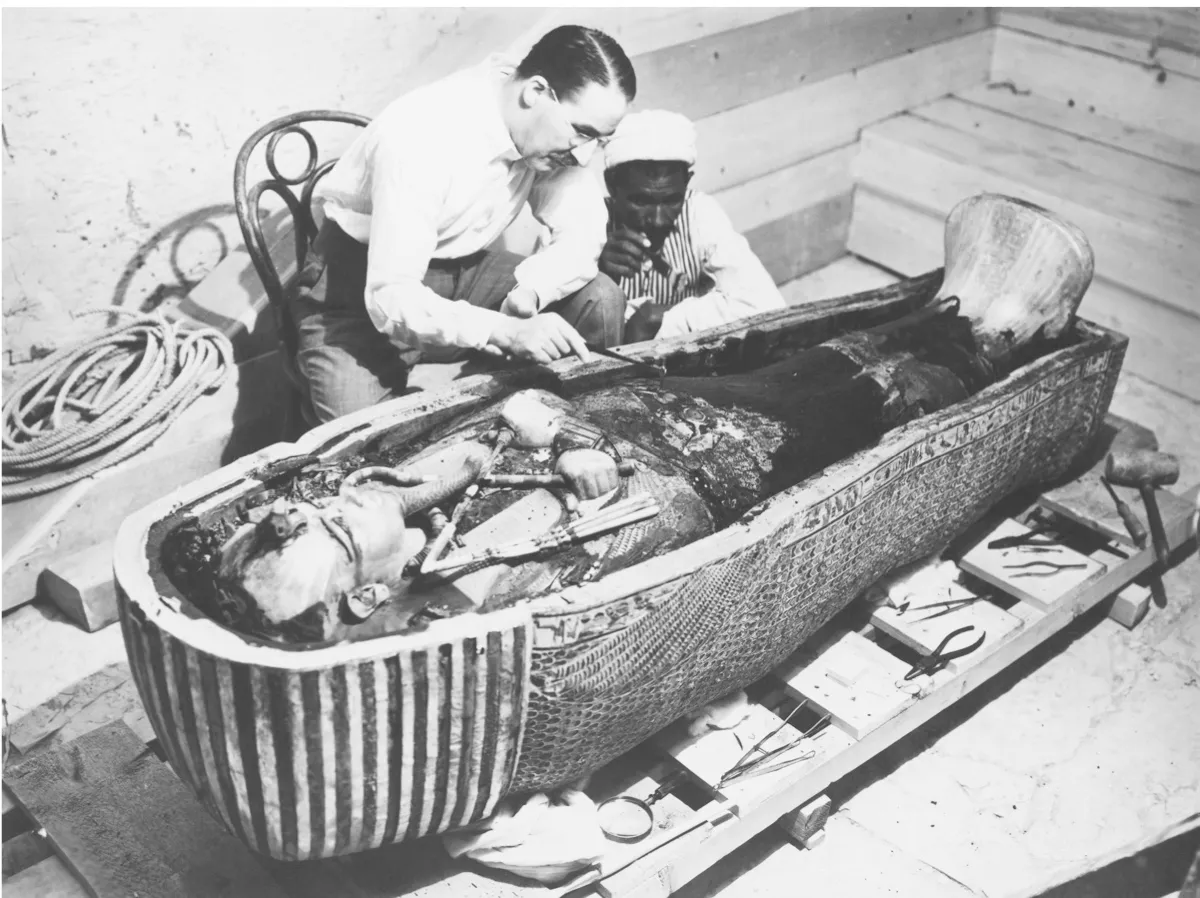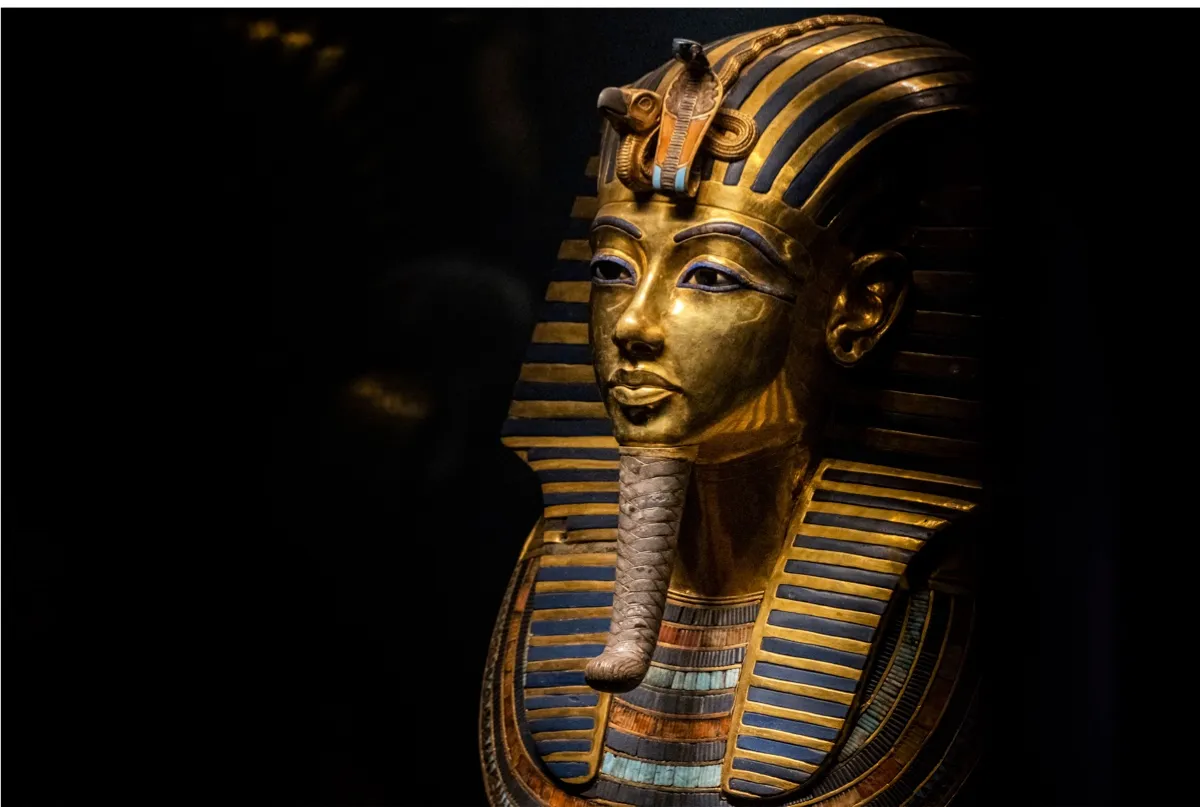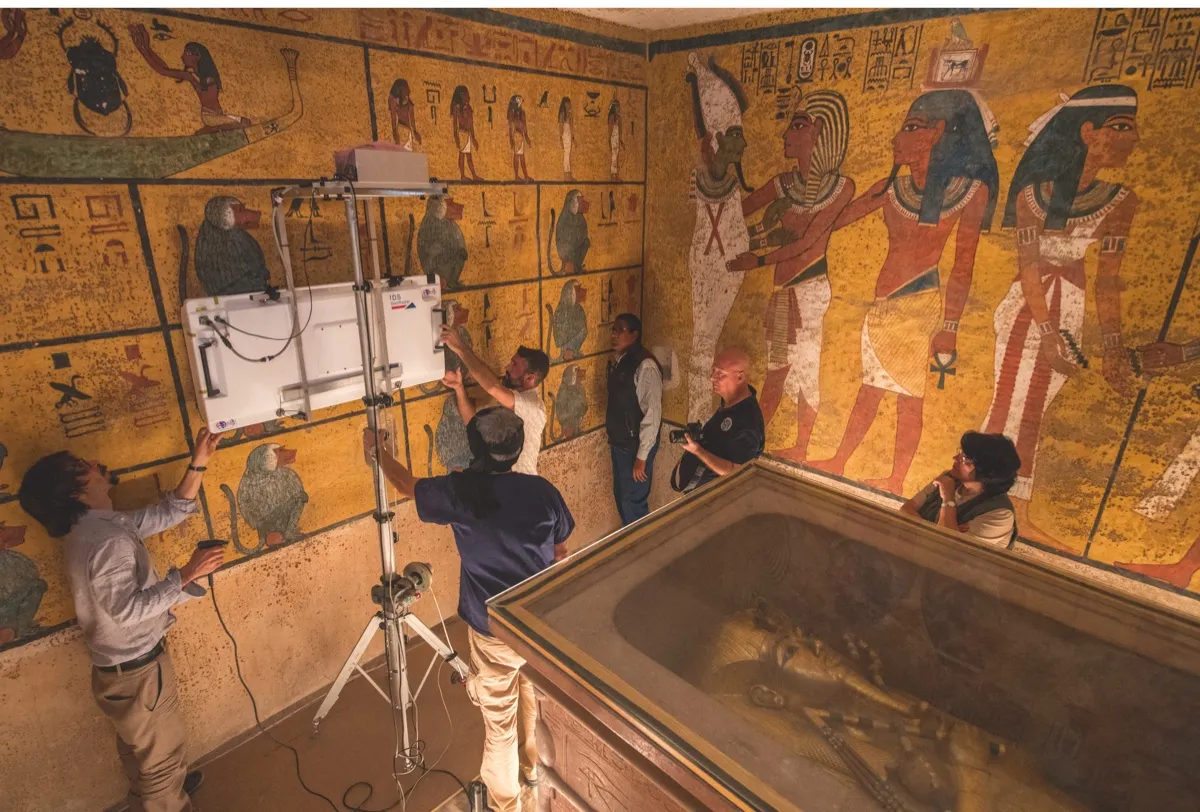On 26 November 2022, it was 100 years since Howard Carter peered through a hole in the entrance to the chambers of Tutankhamun’s tomb and saw “wonderful things”. It was to be one of the greatest archaeological discoveries of all time.
Before Carter discovered the tomb in November 1922, Tutankhamun was an obscure pharaoh, but far from unknown. It was known that he had started life as Tutankhatenand had been married to Ankhesenpaaten, the third daughter of the ‘heretic pharaoh’ Akhenaten and the queen Nefertiti, and that he had ruled briefly under this name at the city of Akhet-Aten (modern Amarna, about halfway between Cairo and Luxor). This city had been founded by Akhenaten in honour of a single deity, the Aten. This abandoned Egypt’s traditional polytheism of many gods presided over by ‘the king of the gods’, Amun-Ra.
However, after a few years, Tutankhamunchanged his name in respect of the god Amun, and returned to the old religion (his queen becoming Ankhesenamunat the same time). He was known to have ruled for a total of about nine years. Despite this, his association with the heretic regime meant that later kings excluded his name from king-lists and usurped his name on monuments.
Carter was confident that Tutankhamun’s tomb lay in the Valley of the Kings (at Luxor, in Upper Egypt), because a cache of leftover materials from the king’s funeral had been found there in 1907. He was right, of course – it had been preserved under a thick layer of concrete-hard flood deposits.
Carter was a meticulous worker and recorded the location of every object in the tomb on plans and sketches, and through the fantastically detailed glass-plate negatives made by photographer, Harry Burton. At some point in its history the tomb had been affected by damp, which led to the spots of mould we see marring the wall-paintings in the burial chamber.

The damp had also caused much warping and deterioration of wooden objects, and dissolved the glues, causing many items to fall apart. Carter’s conservation team, led by Arthur Mace and Alfred Lucas, performed miracles to preserve the treasures we now admire today. In total, less than a quarter of 1 per cent of the tomb contents was lost.
Now, 100 years later, the artefacts are receiving state-of-the-art conservation in readiness for the opening of the Grand Egyptian Museum (GEM) in Giza, Egypt.
Visitors to Tutankhamun’s tomb (numbered KV62) are invariably struck by how small it is – particularly when compared with great royal tombs such as that of Ramesses VI next door. Indeed, it is believed that KV62 was originally intended as the last resting place of a senior courtier, until it was rapidly adapted and pressed into service to house the prematurely deceased young king.
The treasures may now be in museums, but the magical story of the discovery has drawn literally millions of visitors to stand in the tomb over the years. The impact on the wall paintings of breath, sweat and dust brought in by these visitors created the need for an accurate replica of the burial chamber, allowing the original tomb to be periodically closed.

To recreate the tomb, the Madrid-based company Factum Arte scanned the wall surfaces in incredible detail both in 3D and as colour images. Early in 2014 the results were made available online, where they can be viewed in colour or in relief, and examined in fine detail using the zoom facility.
It was scrutiny of the 3D images that led the Egyptologist Dr Nicholas Reeves to issue a paper in April 2015 suggesting that the walls of the burial chamber concealed hidden rooms. On the west wall he thought there were faint outlines of a sealed doorway, and in the main north wall still fainter traces of a partition wall with a service doorway in the centre. This was remarkable enough, but what really caused a sensation was his claim that the beautiful queen Nefertiti lay buried in a hidden chamber beyond. It was a story made for the media, and there were many in the Egyptology community who felt it was just too good to be true.
It is now generally accepted that Nefertiti reigned briefly as King Neferneferuaten (a name-extension she employed while still queen) as a regent, perhaps of Akhenaten, or for the young Tutankhamun. Reeves’s claim that she lay behind the north wall was based on re-identifying the images of Tutankhamun as Nefertiti, and the figure of his successor, Ay (shown ritually ‘opening the mouth’ of Tutankhamun), as Tutankhamun himself.

Reeves drew support for these re-identifications from the examination of paint and plaster layers made by the Getty Conservation team involved in cleaning and restoration work. They revealed that, while the four walls each differed in some respect, the north wall showed evidence of having been reworked. The yellow background colour seen on the other walls had in this case only been filled-in around the human figures later – the original base having been white.
Of the two ‘doorways’, the one in the western wall is the more convincing, and the most obvious feature in the northern wall is a large fault in the rock a little left of centre with some associated restoration. It should be borne in mind that the 3D scans are so sensitive that they show up the thickness of paint outlining figures, and there are a lot of other lines on the walls.
There was an almost universal call for wall-scans to settle the issue of whether there were any hidden chambers. Ground Penetrating Radar (GPR) scans of the burial chamber walls were carried out in late November 2015 by Hirokatsu Watanabe, a colleague of Reeves, using rather antiquated, customised equipment.
His results were never formally published, and the initial press releases were greeted with some scepticism because Watanabe not only claimed to have found voids, but also evidence that these voids contained metal and organic materials – something which several experts pointed out was beyond the capabilities of GPR. What was not noted at the time was that both the voids and the materials within them had supposedly been found extending into areas not predicted by Reeves.
Read more about Ancient Egypt:
- How we deciphered Ancient Egyptian hieroglyphics
- Who deciphered Egyptian hieroglyphics?
- Sound of a 3,000-year-old Egyptian mummy's voice recreated
Although supported by Mamdouh Eldamaty, who was the Egyptian Minister of Antiquities at the time, the scans released to the press drew negative reactions from experts. In March 2016 Dean Goodman, who developed the GPR-SLICE software stated: “If we had a void, we should have a strong reflection. But it just doesn’t exist.”
In March 2016 a new Minister of Antiquities, Khaled el-Anany, permitted a second set of scans to be conducted by Eric Berkenpas and Alan Turchik for the National Geographic Society. These were much more thorough. First scanning a wall with a known void behind it to use as a model, they took 40 scans at both low and high frequencies, and at differing heights. A report was issued to the Antiquities Service, who formally announced in May that no voids had been found.
In February 2018, Francesco Porcelli from the Polytechnic University of Turin then led the most comprehensive set of GPR scans to date. After first establishing that they could pick up other chambers through the rock, three GPR systems with frequencies from 150MHz to 3,000MHz and dense spatial sampling were employed. But nothing was found.

Electrical resistivity and magnetic induction scans made from the surrounding ground surface did, however, pick up some shallow anomalies separated by some metres from Tutankhamun’s tomb. Similar work by the UK company Terravision Exploration found a ‘corridor-like’ anomaly, about two metres high and 10 metres long, running to the north and parallel with the entrance passage to KV62.
There is some suspicion that the air-extraction system in the tomb is creating a false reading here. In any case, a void such as this is unlikely to reveal a burial of Nefertiti.
In 2019 Reeves attempted to resurrect his idea with a fresh paper. Included was a reassessment of NGS scan data by George Ballard of the company Geotechnics, who believed he could see evidence of a rubble-filled passage behind the north wall. But if there was a wall with rubble behind it, this could simply be a case of work being cut short at the death of the pharaoh.
If Nefertiti had once been buried in KV62, then she probably lay where Tutankhamun was later found. We know that he took items from her funeral goods for himself, including perhaps the sarcophagus, so maybe he simply displaced her.
While for most people it is case closed, there are still those who cry “just drill a hole”. They invariably propose a hole drilled into the area behind the north wall from the adjacent treasury chamber. And if that hole failed to find anything, they would simply say, “drill another… ”
A timeline of Tutankhamun's tomb
1323BC
Tutankhamun dies and is buried in the Valley of the Kings.
26 Nov 1922
Howard Carter looks into KV62 and sees “wonderful things”.
16 Feb 1923
Carter opens the KV62 burial chamber (and adjacent treasury).
Spring 1932
Last items from KV62 conserved and sent to the Egyptian Museum in Cairo.
Mar-May 2009
Factum Artescans the burial chamber paintings and sarcophagus in digital 3D.
2009
Getty Conservation Institute starts cleaning and conservation work, revealing evidence for differences in the plaster and paint sequences, for each of the four walls of the burial chamber.
Apr 2015
Nicholas Reeves issues his paper, ‘The burial of Nefertiti?’
26-27 Nov 2015
Scan carried out byHirokatsu Watanabe, who claims there are voids in the walls.
Mar 2016
National Geographic Society carries out scans, and finds no voids.
Feb 2018
Extensive high-tech survey led by Francesco Porcelli finds no voids.
2019
Nicholas Reeves issues ‘The burial of Nefertiti II’.
2020
Terravision carries out scan near KV62, and finds a corridor-like anomaly.
- This article first appeared in issue 384of BBC Science Focus – find out how to subscribe here
